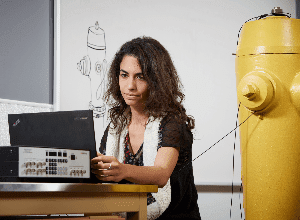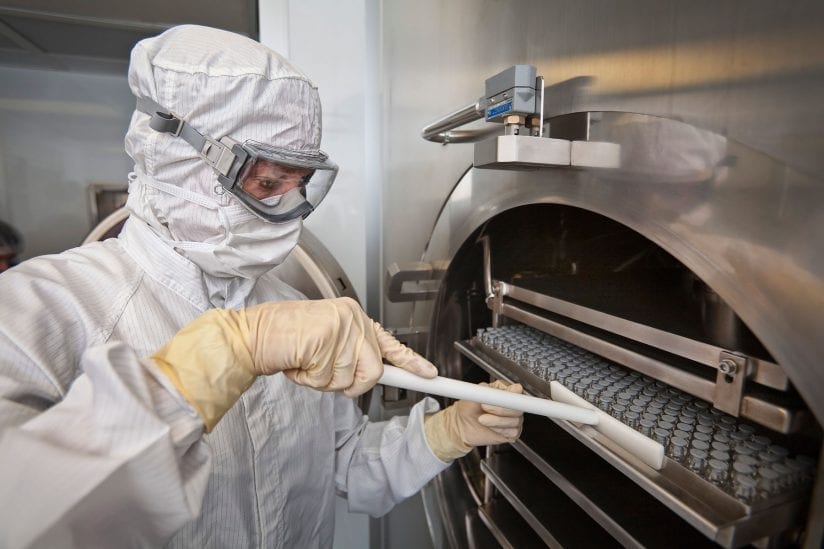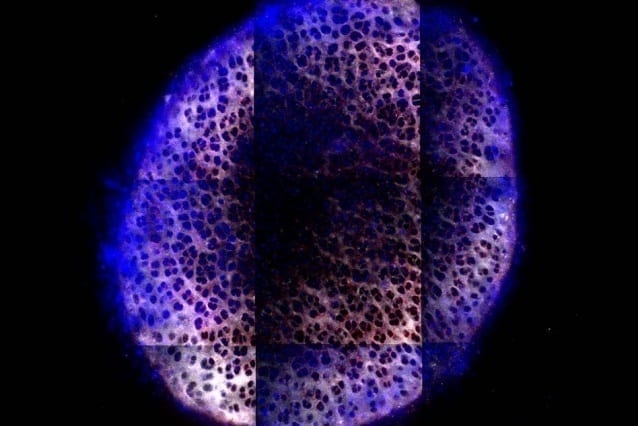
Costly water losses in municipal water systems could be significantly reduced using sensors and new artificial intelligence (AI) technology.
Developed by researchers at the University of Waterloo in collaboration with industry partners, the technology has the potential to detect even small leaks in pipes.It combines sophisticated signal processing techniques and AI software to identify telltale signs of leaks carried via sound in water pipes.
The acoustic signatures are recorded by hydrophone sensors that can be easily and inexpensively installed in existing fire hydrants without excavation or taking them out of service.
“This would allow cities to use their resources for maintenance and repairs much more effectively,” said lead researcher Roya Cody, a civil engineering PhD candidate at Waterloo. “They could be more proactive as opposed to reactive.”
Municipal water systems in Canada lose an average of over 13 per cent of their clean water between treatment and delivery due to leaks, bursts and other issues. Countries with older infrastructure have even higher loss rates.
Major problems such as burst pipes are revealed by pressure changes, volume fluctuations or water simply bubbling to the surface, but small leaks often go undetected for years.
In addition to the economic costs of wasting treated water, chronic leaks can create health hazards, do damage to the foundations of structures and deteriorate over time.
“By catching small leaks early, we can prevent costly, destructive bursts later on,” said Cody.
Researchers are now doing field tests with the hydrant sensors after reliably detecting leaks as small as 17 litres a minute in the lab.
They are also working on ways to pinpoint the location of leaks, which would allow municipalities to identify, prioritize and carry out repairs.
“Right now they react to situations by sending workers out when there is flooding or to inspect a particular pipe if it’s due to be checked because of its age,” Cody said.
The sensor technology works by pre-processing acoustic data using advanced signal processing techniques to highlight components associated with leaks.
That makes it possible for machine learning algorithms to identify leaks by distinguishing their signs from the many other sources of noise in a water distribution system.
Learn more: AI could help cities better detect water leaks
The Latest on: Artificial intelligence
[google_news title=”” keyword=”artificial intelligence” num_posts=”10″ blurb_length=”0″ show_thumb=”left”]
via Google News
The Latest on: Artificial intelligence
- More than six out of 10 tech leaders in Ireland ‘do not have an artificial intelligence strategy’on May 8, 2024 at 10:01 pm
More than six in 10 tech leaders in Ireland are not yet investing in artificial intelligence (AI) technologies and do not have an AI strategy in place, according to a study by consulting giant EY.
- UK edges closer to new laws for artificial intelligenceon May 8, 2024 at 10:01 pm
On Friday, the House of Lords will hear the third reading of the AI bill and, if all goes well, it will progress to the House of Commons.
- Advances in artificial intelligence mean 'deadbots' can 'haunt' the living, warn experts. Here's what it meanson May 8, 2024 at 8:31 pm
Also read | AI attempts to bring dead back to life, give people closure As per the University of Cambridge researchers, "Artificial intelligence that allows users to hold text and voice conversations ...
- Talkdesk Hires Simon Horrocks as Asia-Pacific Leader to Turbocharge the Company’s Regional Growth as Artificial Intelligence Innovatoron May 8, 2024 at 6:00 pm
Simon Horrocks joins Talkdesk as the Asia-Pacific (APAC) leader to help drive the company’s ongoing growth and expansion as an artificial intelligence (AI) leader in customer experience (CX). Horrocks ...
- RSA 2024: The State of Artificial Intelligence in Cybersecurityon May 8, 2024 at 5:27 pm
As its popularity and availability soar, artificial intelligence has become a tool for cyberattackers as well as defenders.
- Guest Perspective: How does Artificial Intelligence impact inventorship? US Patent and Trademark Office issues new guidelines.on May 8, 2024 at 1:45 pm
In 2022, the Federal Circuit ruled that an inventor had to be a natural person. While this decision only relates to a sole AI inventor, its reasoning could easily be applied to a joint inventor. As ...
- 1 Artificial Intelligence (AI) Stock Down 29% to Buy Right Now Before It Soars 78%on May 8, 2024 at 7:30 am
This chip stock tanked following the release of the company's latest earnings report, but investors shouldn't miss the bigger picture.
- Artificial Intelligence And Human Expertise In Graphic Designon May 8, 2024 at 4:15 am
Technology has long been a key part of graphic design, but modern AI-powered tools are going beyond traditional tools by leaps and bounds.
- A university creates an artificial intelligence institute, partly to help governmenton May 7, 2024 at 3:06 pm
The University of Maryland has launched of a new institute dedicated to developing the next generation of artificial intelligence people.
via Bing News











